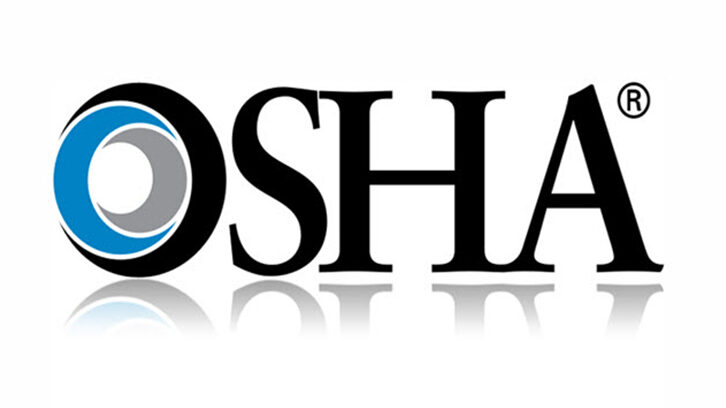OSHA Letter of Interpretation Says U.S. Companies Who Purchase Chemicals from Foreign Suppliers May Be Responsible for Authoring New Safety Data Sheets
Posted on October 24, 2018 | in Safety

If your business purchases chemicals from outside the U.S., there’s a strong possibility that your safety data sheets (SDSs) are out of compliance.
One of the most likely causes of non-compliance relates to the supplier information contained in Section 1 of the SDS. When you receive an SDS from any supplier, you need to ask, “Does Section 1 of the SDS contain the address and phone number of a U.S. based company?” If not, then your SDS is out of compliance! OSHA’s Hazard Communication Standard (HazCom) states that SDSs and shipped container labels are out of compliance in the U.S. if they contain contact information from the foreign supplier only.
That’s just one of several potential sources of non-compliance highlighted in OSHA’s September 18, 2018 letter of interpretation (LOI), published in direct response to questions submitted by the VelocityEHS Authoring Services Team here at VelocityEHS.
Click Here to Read the Full Letter of Interpretation
An important distinction misunderstood by many U.S. companies is that OSHA designates an individual or company who imports a hazardous chemical into the U.S. as the “responsible party” for that chemical — meaning they assume the same requirements that a chemical manufacturer would face under HazCom. This includes obligations for accurate classification of chemical hazards according to OSHA hazard criteria, as well as authoring or obtaining SDSs and labels. This “responsible party” status applies even in the event that the chemical in question will only be used in the importer’s workplace.
As a first step to ensuring compliance, importers need to review all SDSs received from foreign suppliers and verifying that they meet OSHA HazCom requirements. It is a very real possibility that SDSs for chemicals manufactured and purchased from outside the U.S. will not meet OSHA requirements, at which point the responsible party would be required to author a new SDS.
As mentioned before, OSHA requires that Section 1 of the SDS include the name, address, and telephone number of the manufacturer, importer, or other responsible party, and must also include an emergency phone number. The responsible party’s address must be located in the United States, and the phone number must be a domestic number. Unless your foreign supplier provides you with an SDS containing your company’s unique contact information, you are required to update that information and may ultimately need to author an entirely new SDS.
Another likely source of non-compliance is one that can be quite easy to overlook, but which has a potentially significant impact on workplace health and safety. OSHA has set forth physical and health hazard classification criteria in Appendixes A-B of the HazCom Standard that determine what specific hazard information must be included on SDSs and labels. These criteria differ in many subtle ways from other nations’ hazard classification criteria, and it is highly unlikely that foreign suppliers’ SDSs will fully meet OSHA requirements. U.S. companies that purchase chemicals from foreign suppliers need to verify that chemical hazards indicated on SDSs and labels are classified according to OSHA hazard criteria. If they are not, the importer is obligated to re-classify the chemical’s hazards and author a new SDS.
Other notable SDS requirements addressed in the LOI include:
- Manufacturers and importers may list a contracted company (SDS author or preparer such as an online SDS service) on its chemical label and SDS as the party to be contacted to provide additional or emergency information for that chemical. However, the emergency contact information for that contracted company must be based in the U.S., and the manufacturer or importer remains responsible for ensuring compliance with OSHA HazCom requirements.
- It is acceptable to have a “hybrid” SDS and/or “hybrid” label that contains both OSHA HazCom and Health Canada WHMIS 2015 required information. However, “hybrid” labels and SDSs must be in compliance with all elements of the HazCom Standard, and any additional information (e.g. WHMIS 2015 information) that is included must not contradict the information required under HazCom.
Let VelocityEHS Help
Chemical manufacturers, importers, distributors, and employers who handle and use hazardous chemicals in the workplace should already be meeting the requirements detailed in OSHA’s recent LOI, but if you’re uncertain about your SDS authoring and labeling requirements or have concerns about compliance, contact the VelocityEHS Authoring Services Team to learn how we can help you.
We offer expert SDS and label authoring services that let you take the time, cost and guesswork out of HazCom compliance. Combined with our comprehensive suite of Regulatory Consulting Services, including SDS Compliance Check, we’ll help you ensure your SDSs and labels are fully aligned with OSHA’s HazCom requirements. To learn more, click here or give us a call at 1.888.362.2007.